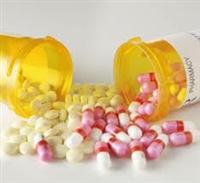 What is the Methadone and Suboxone deception? And who is fueling it? Many unsuspecting substance abusers are being led to believe that by switching from their opiate of choice to a daily intake of Methadone or Suboxone that they are then “clean” or “sober.” When in fact, they are just switching from one opiate to another. With the truth being, as Dr. Julia Aharonov said in a recent article, that Methadone and Suboxone are longer acting and just as (if not more) addicting than heroin.
What is the Methadone and Suboxone deception? And who is fueling it? Many unsuspecting substance abusers are being led to believe that by switching from their opiate of choice to a daily intake of Methadone or Suboxone that they are then “clean” or “sober.” When in fact, they are just switching from one opiate to another. With the truth being, as Dr. Julia Aharonov said in a recent article, that Methadone and Suboxone are longer acting and just as (if not more) addicting than heroin.
To clarify, no one can disagree with the fact that shooting heroin is incredibly dangerous and carries numerous risks and consequences. So it makes sense that doctors would direct a client quickly away from it with the support of Methadone or Suboxone. But a client needs to understand that they are replacing one drug with another. Sobriety is achieved by discontinuing the use of all drugs. Does placing a client on Methadone or Suboxone bring them closer to a drug-free life or put them at risk for developing an addiction to the replacement therapy?
Big pharmaceutical companies and federal money have made Methadone and Suboxone support seem like an attractive approach, but is it the safest and most ideal recovery approach in the long-term? Addiction physicians at first used Methadone and Suboxone to taper off clients from heroin or opiates thought to be harder or stronger than Methadone or Suboxone. But both replacement therapy drugs have both shown to be highly addictive, can be very difficult to detox from, and carry the risk of overdose.
It’s important for clients to be informed about the risks that these drugs carry. It’s also crucial that clients are made aware of alternative methods available to assist with discontinuing the use of opiates while minimizing withdrawal symptoms and cravings (so as to make the use of Methadone and Suboxone unnecessary).


